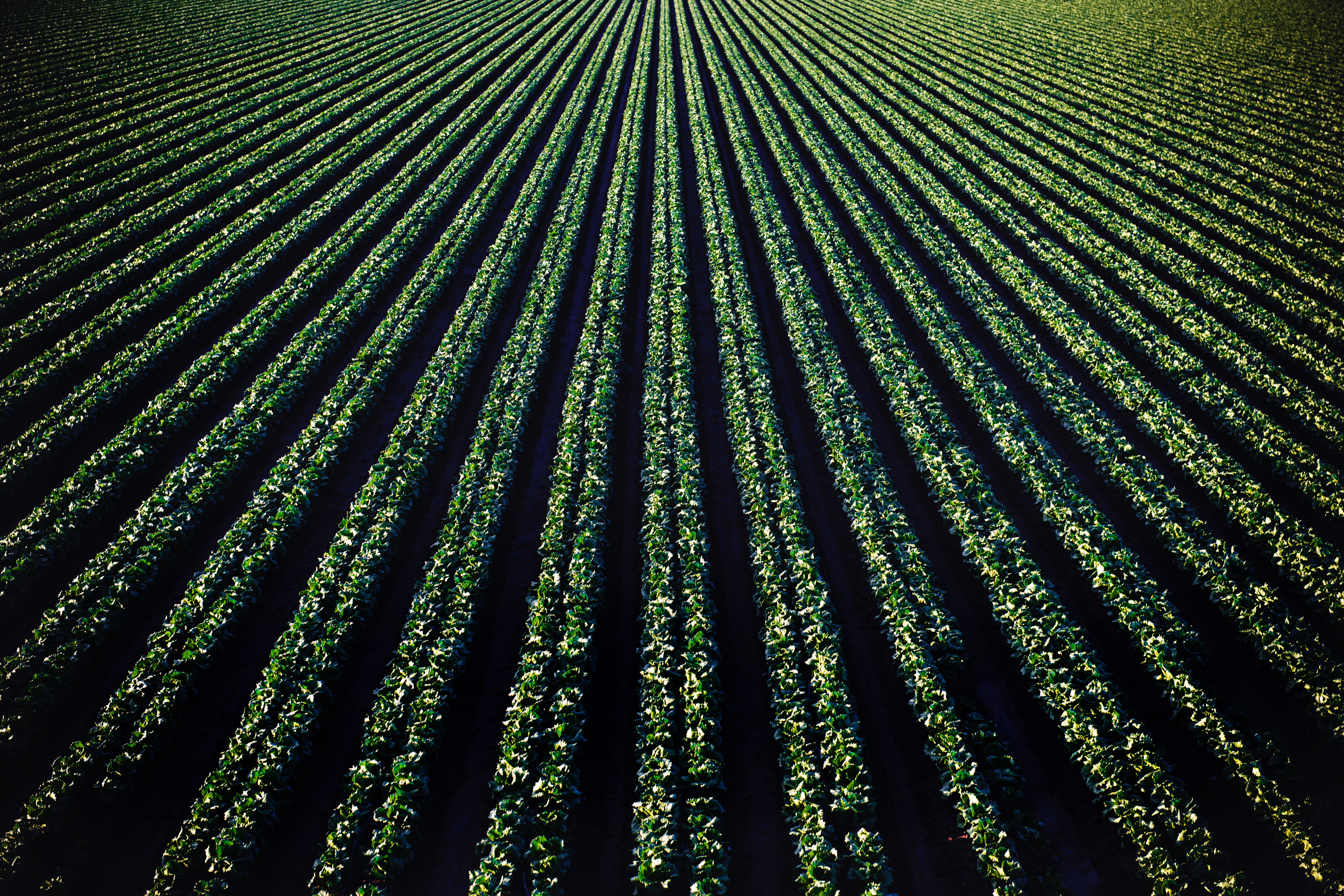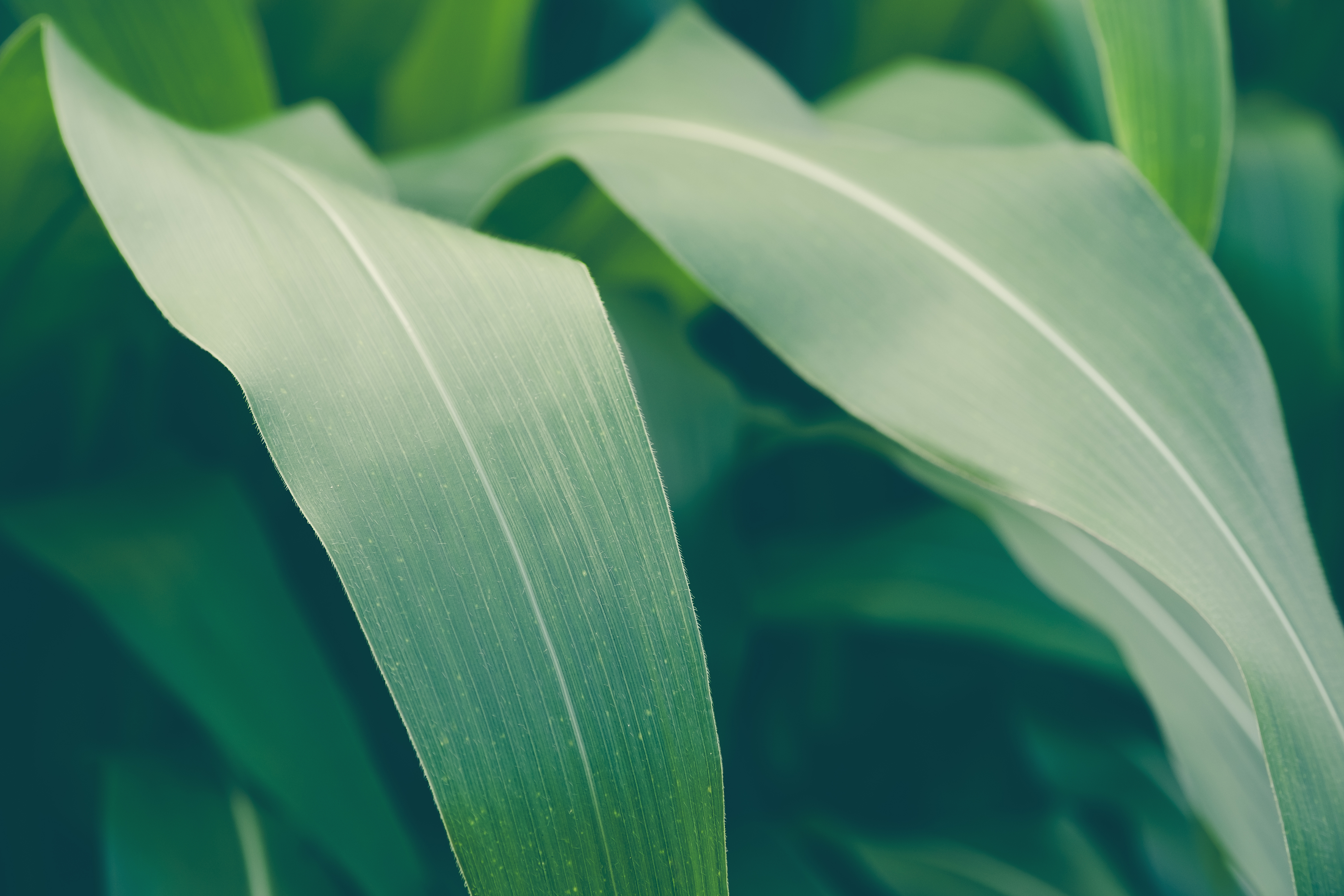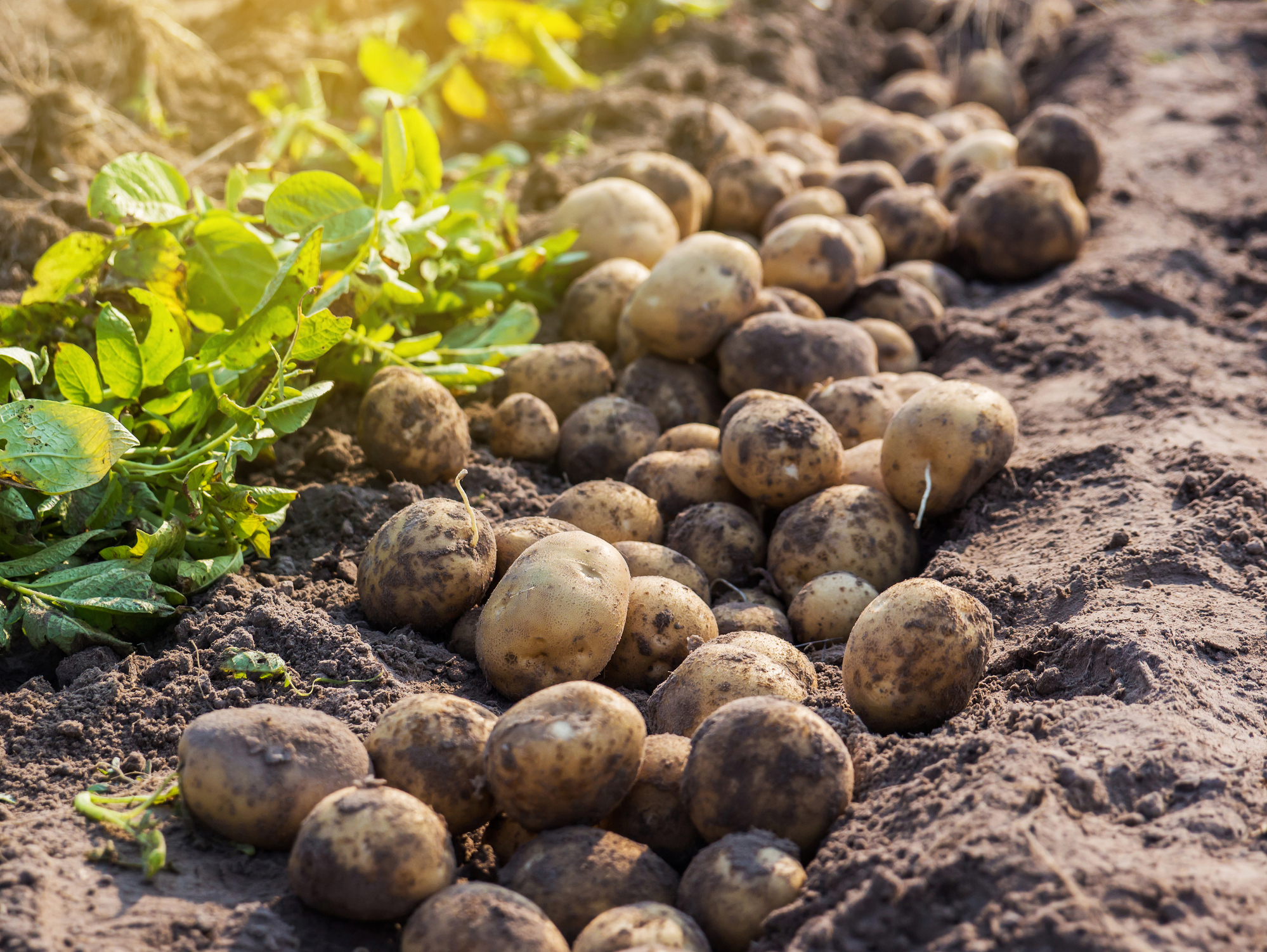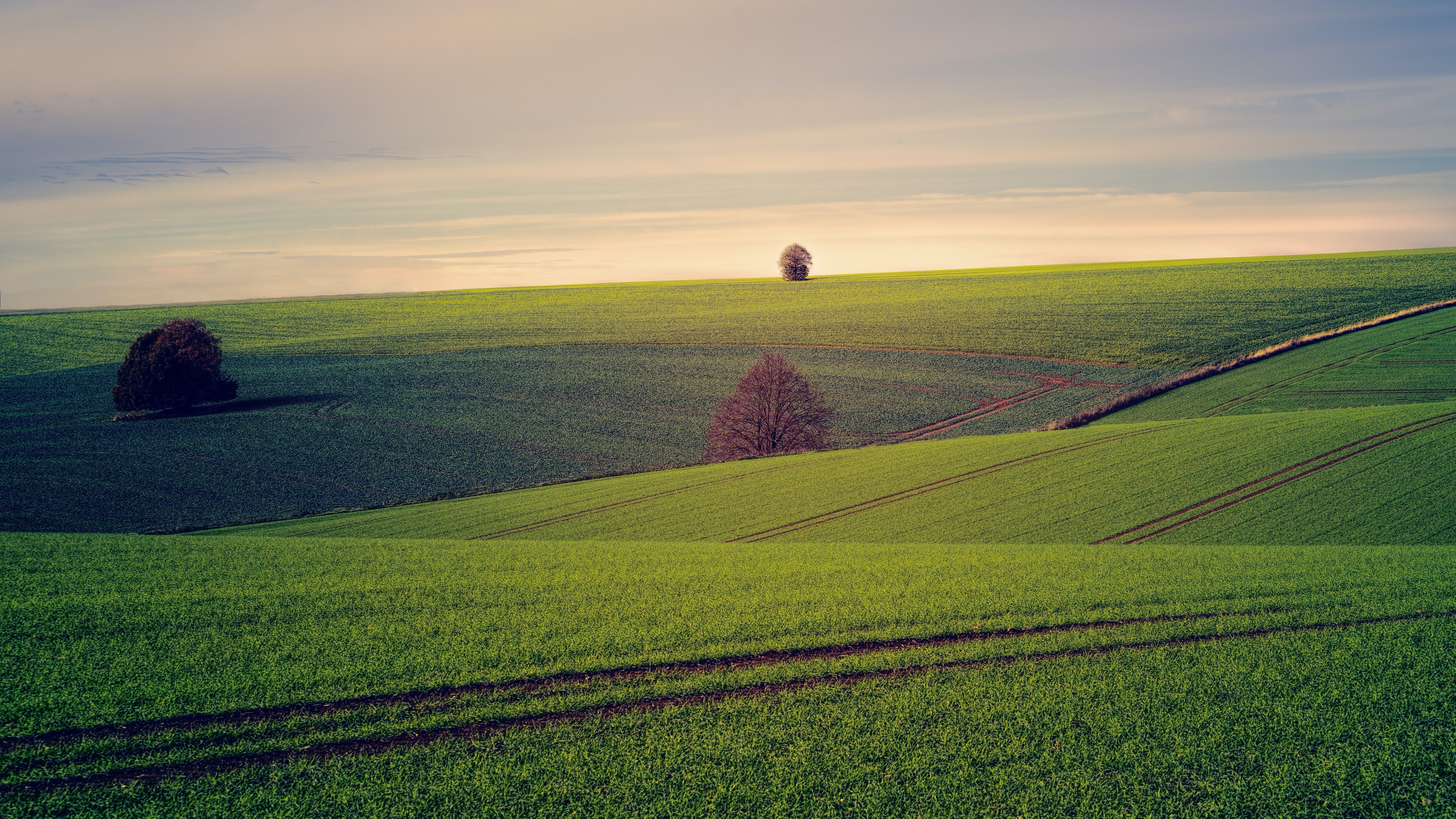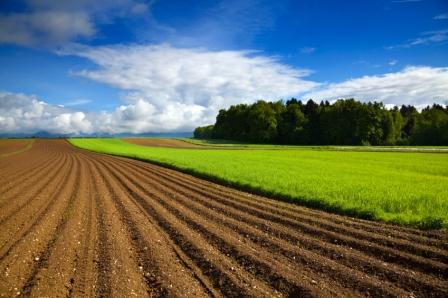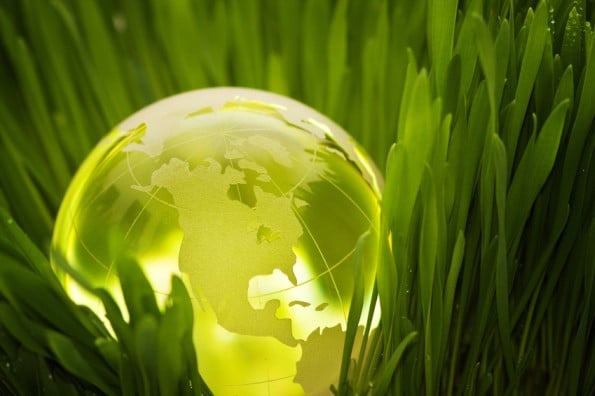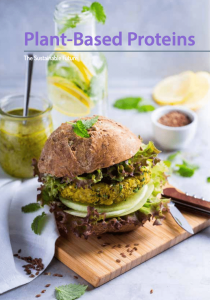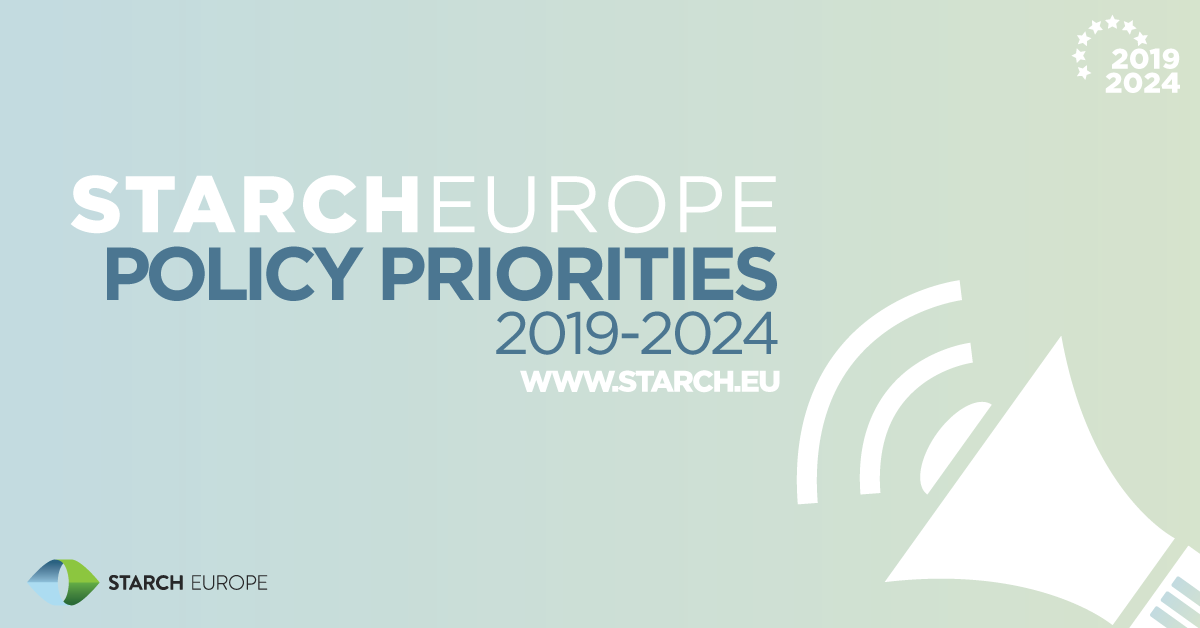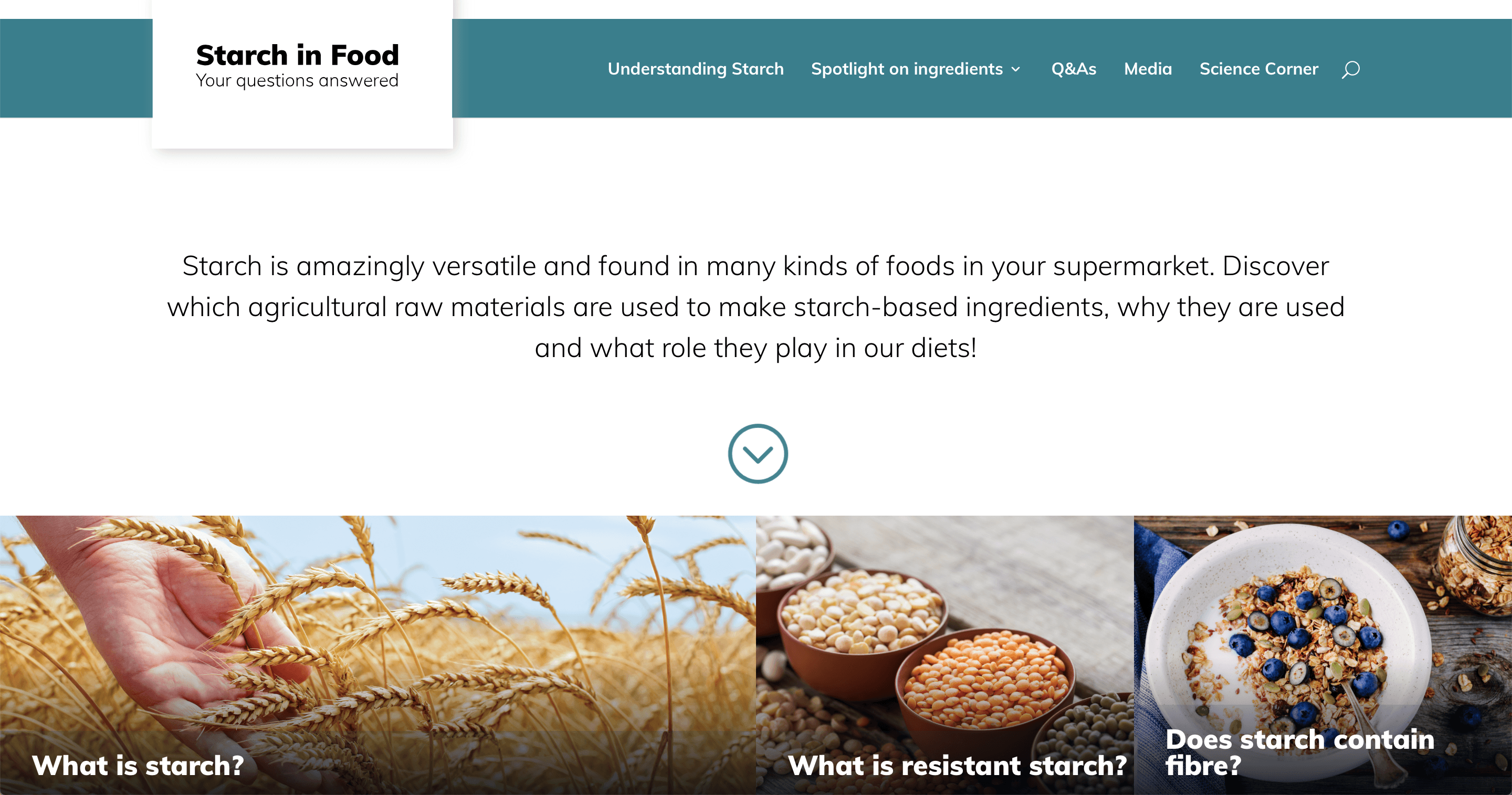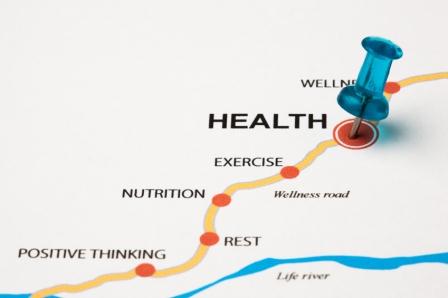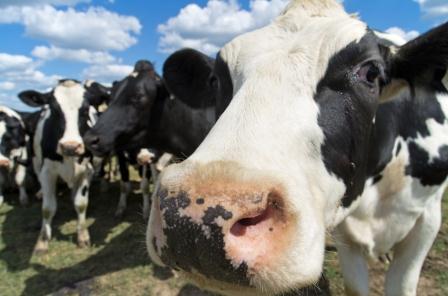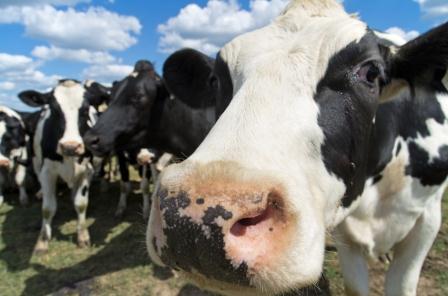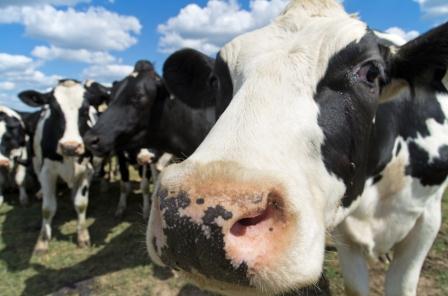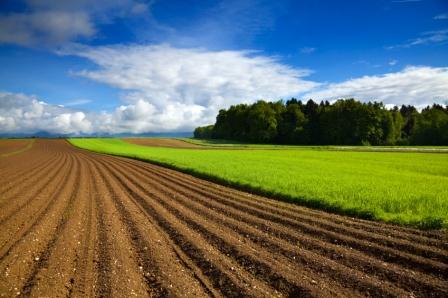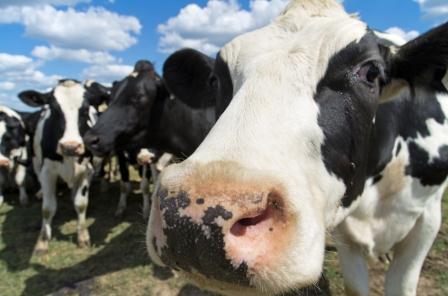
OUR PRIORITIES

OUR PRIORITIES
Agricultural policy
Since its creation in 1959, the major policy tool of the EU which has influenced the supply, quality and price of EU agricultural raw materials has been the Common Agricultural Policy. Going forward, the CAP, and notably Member State national strategic plans, will be a key enabler in the delivery of the EU’s ambitious Green Deal agenda, in particular the EU biodiversity and Farm to Fork strategies. Crucial to Starch Europe is that these national CAP strategic plans are closely monitored in order to ensure no new distortions to the EU single market emerge.
Bioeconomy
Starch is renewable and biodegradable. As such it is a well-suited raw material for the sustainable use of agricultural products in the bio-based industry. For decades, the EU starch industry has been producing bio-based products that are used as raw materials, generally replacing fossil-fuel-based ingredients, in the fermentation, chemical, cosmetics, textile, paper, plastics and detergent industries.
Starch biorefineries are core to the success of Europe’s bioeconomy. Starch Europe is therefore a strong supporter of the EU Bioeconomy strategy and its action plan on all four bioeconomy outlets (food, feed, industrial and fuel), as updated in 2018 and a founding member of the European Bioeconomy Alliance. We also welcome the Commission Communication’s acknowledgement of the importance of the EU Bioeconomy in the delivery of both the Farm to Fork strategy and Circular Economy Action Plan objectives.
Environmental policy
Starch Europe fully supports the EU Green Deal objective of achieving carbon neutrality by 2050. The main input costs for EU starch producers are, first and foremost, the cost of the agricultural raw material, and second, the cost of the energy consumed during extraction and processing.
For economic, as well as environmental reasons, therefore, starch producers seek to ensure that starch production plants are as energy efficient as possible. It is for this reason that almost all EU starch plants now use high efficiency Combined Heat and Power Generation (CHP) systems, which offer energy savings ranging between 15-40% when compared to the supply of energy and heat from conventional power stations and boilers.
The EU starch industry was also one of the first agri-food sectors to conduct a Life Cycle Assessment (LCA) study for all its products, first in 2001 and more recently and using the most updated and robust methodologies, in 2012 and 2015. This not only reflects our mission to assure a reliable supply of safe starch-based ingredients but also responds to the increasing demand for this type of information from our customers and our joint desire to ensure that this information is being provided in a consistent manner.
As a major energy user, the EU starch industry closely follows all EU legislation which impacts the cost of the energy it uses, notably the Energy Efficiency Directive and the Emission Trading Scheme, and seeks to ensure that the Starch Industry’s position and views are understood and incorporated in an effort to ensure that the ingredients produced by the sector are not left at a competitive disadvantage against imported products with which they compete, .
Food/feed Law
60% of EU starch and almost all the proteins and fibres produced by the EU starch industry go into the EU food/feed chain. When starch, proteins and fibresare being extracted, it is often not yet known whether they will go to food or non food applications. All ingredients must therefore comply with EU food and feed law.
Starch Europe members are strongly implicated by EU food and feed law and Starch Europe seeks to ensure that the specific interests of starch producers are taken into account in its development.
Issues of particular interest include:
- Contaminants/Mycotoxins: Food safety must be the basis for any decision regarding the maximum limits for mycotoxins. If safety is an issue, preventive and mitigation methods like the implementation of code of good practices should be put into place and if, despite these codes, safety is still at stake, then limits should be realistic, achievable, consistent, controllable and be based on risk analysis. A realistic and consistent approach should be taken also for limits in feed products.
- Legislation on gene technology: Starch Europe members continue to respond to current customer demands for conventional products in compliance with EU laws and by implementing traceability as long as most European consumers are not ready to accept GMOs. Some new genomic techniques could however play an important role in helping EU farmers to reach targets being set under the Green Deal agenda and more clarity is needed on how these techniques are to be regulated going forward.
- Other: Starch Europe also closely follows the development of the EU legislation regarding, inter alia, additives and processing aids, animal feed and codes of good practice, and materials in contact with food.
Nutrition and Health
Starch is the most common digestible carbohydrate in the human diet. Digestible carbohydrates are the most important fuel for our brains and provide our bodies with the energy our organs need to function. Proteins and fibres, the main other ingredients produced by the starch industry, also play an invaluable role in a healthy diet. In order to function correctly, our body needs carbohydrates, protein, fat, water, minerals and vitamins. In terms of energy intake, EFSA, the European Food Safety Authority, recommends that 45-60% of our daily energy intake comes from carbohydrates (4 kilocalories of energy per gram) which includes dietary fibres (on average 2 kilocalories of energy per gram), 20-35% from fats (9 kilocalories of energy per gram) and 10-15% from proteins (7 kilocalories of energy per gram).
The maintenance of a stable body weight requires the right balance between the total amount of energy consumed and the total amount of energy expended. However, increases in body weight occur when energy intake exceeds expenditure. Carbohydrates, like starch and sugars, form an essential part of the human diet, but. , if they are consumed in excess, this can lead to problems of obesity.
In order to help consumers opt for healthier and more sustainable diets, providing clear and science-backed information is critical. To support this goal, Starch Europe launched its consumer facing www.starchinfood.eu website in 2018 and its BeyondStarch campaign in 2019. These information efforts will continue in order to help consumers better understand the ingredients from the starch industry: where they come from, why they are added and what their nutritional value is.
Trade
In a world starch market of approximately 75 million tonnes, the EU produces 11 million tonnes. The USA and China are the world’s largest starch producers, followed by the EU and Thailand. Brazil is also growing in importance as a starch producer.
For many starch products, these third countries are in a position to produce starch at more competitive prices than the EU. This is partly the result of lower raw material and production costs and partly as a result of less stringent, for example, environmental legislation. As such, in order to maintain the competitiveness of the EU starch industry, a number ofstarch products imported from many third countries are subject to an EU import duty.
For other starch products and co-products, for example potato starch and wheat gluten, the EU is the world’s biggest and/or highest quality producer and its products are widely exported throughout the world. For these products Starch Europe seeks to ensure that fair market access is assured.
Starch Europe therefore takes a keen interest in the EU’s trade policy agenda, including the EU bilateral FTA negotiations with various third countries and/or regions.
Innovation
The European starch industry is a long-established part of the agri-food value chain, built on constant innovation to meet societal demands and consumer expectations.
Rural Strength
We strengthen rural areas by providing an essential source of income and employment, both directly and to the farmers who supply the raw materials used to make our ingredients.
Plant-Based
We offer a vast range of plant-based ingredients, including carbohydrates, proteins and fibres, to make food and drink taste better, last longer, and be more sustainable and nutritious.
Bioeconomy
We develop bio-based materials and alternatives to fossil-based products in industrial applications from renewable resources, offering functional properties and CO2 emission reductions.
Sustainability
By valorising the entire crop to serve food, feed and industrial customers, while reducing our environmental footprint, the EU starch industry is a pillar of the sustainable food system.
Resources
Plant-Based Proteins must be an EU Policy Priority
Andreas2023-11-14T12:31:05+00:00November 14, 2023
Plant-Based Proteins must be an EU Policy Priority [...]
Starch Europe Publishes Decarbonisation Roadmap
Andreas2022-10-12T09:04:20+00:00October 12, 2022
Starch Europe Publishes Decarbonisation Roadmap [...]
Starch Europe Publishes Results of 2022 Life Cycle Analysis (LCA)
Andreas2022-10-05T17:04:44+00:00April 13, 2022
Starch Europe Publishes Results of 2022 Life Cycle Analysis [...]
Starch Europe regrets the decision to apply anti-dumping duties to Wheat Gluten exports to Canada
Andreas2021-08-17T13:30:35+00:00August 17, 2021
Starch Europe deeply regrets the explanation by the Canadian [...]
Joint Starch Europe – CESPU Statement: The EU Potato Starch Value Chain, Sustainability and the EU Green Deal
Andreas2021-04-13T17:48:37+00:00March 12, 2021
Joint Starch Europe - CESPU Statement – The EU [...]
Starch Europe’s Position on the Taxonomy Regulation’s draft delegated act on climate-related objectives and its annexes
Andreas2021-01-12T15:48:53+00:00January 12, 2021
Starch Europe's Position on the Taxonomy Regulation’s draft delegated [...]
Starch Europe announces winners of 2019 – 2020 Safety Awards
Andreas2020-11-13T14:27:34+00:00November 12, 2020
Starch Europe announces winners of 2019- 2020 Safety Awards [...]
Implementation of EU-Vietnam FTA to be monitored during these economically challenging times
2020-10-15T09:09:26+00:00August 6, 2020
Implementation of EU-Vietnam FTA to be monitored during these [...]
Starch Europe Welcomes the Publication of the EU Farm to Fork Strategy
2020-09-21T12:04:24+00:00May 20, 2020
Starch Europe Welcomes the Publication of the EU Farm to [...]
Starch Europe supports EUBA position on EU Green Deal
2020-09-21T12:10:03+00:00April 30, 2020
The European Bioeconomy Alliance (EUBA), an alliance representing twelve organisations [...]
The key contribution of the EU starch industry’s plant-based protein products
2021-03-01T10:15:48+00:00March 16, 2020
The EU starch industry’s plant-based protein products are key [...]
The EU starch industry’s contribution to the Commission’s consultation on the Farm to Fork strategy
2020-09-21T12:04:24+00:00March 14, 2020
The EU starch industry’s contribution to the Commission’s consultation on [...]
Starch Europe announces winners of 2018- 2019 Safety Awards
2020-10-15T09:11:05+00:00November 15, 2019
Starch Europe announces winners of 2018- 2019 Safety Awards [...]
Starch Europe product factsheet on Plant-Based Proteins
2020-09-21T12:04:24+00:00November 4, 2019
In its continuous efforts to help better inform customers and [...]
Starch Europe Publishes its Policy Priorities for 2019-2024
2020-09-21T12:04:25+00:00October 15, 2019
A Partner for Today and Tomorrow Starch Europe Publishes the [...]
Starch Europe announces 60th anniversary campaign with launch of new StarchinFood.eu website
2020-09-21T12:04:25+00:00May 20, 2019
Starch Europe announces 60th anniversary campaign with launch of new [...]
Starch Europe Charter on Safety
2020-09-21T12:04:25+00:00March 12, 2019
Starch Europe Charter on Safety 12 March 2019 Starch Europe [...]
Statement on the decision of the Chinese Minister of Commerce to extend the anti-dumping duties
2020-09-21T12:04:25+00:00February 19, 2019
Statement on the decision of the Chinese Minister of Commerce [...]
Starch Europe Statement on the EU-Funded SciView Study
2020-09-21T12:04:25+00:00February 1, 2019
Starch Europe Statement on the EU-Funded SciView Study Starch [...]
Starch Europe welcomes Commission’s report on plant proteins
2020-09-21T12:04:25+00:00November 27, 2018
Starch Europe Welcomes Release of Commission’s Report on the Development [...]
Starch Europe announces winners of 2017-2018 Safety Awards
2020-09-21T12:04:25+00:00November 15, 2018
Starch Europe announces winners of 2017-2018 Safety Awards Press Release [...]
The EU starch industry – a key enabler to boosting the bioeconomy in the EU
2020-09-21T12:04:25+00:00November 12, 2018
The EU starch industry – a key enabler to boosting [...]
Bioeconomy Strategy Update can be a Game-Changer
2020-09-21T12:04:25+00:00November 8, 2018
Bioeconomy Strategy Update can be a Game-Changer — PRESS RELEASE [...]
Starch Europe Position on the next CAP (2021-2027)
2020-09-21T12:04:25+00:00October 26, 2018
The EU starch industry’s position on the next Common Agriculture [...]
The EU has given new direction to the European Bioeconomy Strategy. Now it’s time to put action behind the words.
2020-09-21T12:04:25+00:00October 16, 2018
The EU has given new direction to the European Bioeconomy [...]
Joint Statement: EU and British starch industry associations voice joint call on BREXIT
2020-09-21T12:04:25+00:00September 20, 2018
Further to this week’s Informal Salzburg Summit, UK and EU27 [...]
Market Data Confirms No Increase in Isoglucose Sales Since End Of EU Sugar and Isoglucose Quotas
2020-09-21T12:04:26+00:00September 19, 2018
STATEMENT MARKET DATA CONFIRMS NO INCREASE IN ISOGLUCOSE SALES [...]
Starch Europe fully supports EUBA contribution on plastics strategy
2020-09-21T12:04:26+00:00May 29, 2018
Increased recycling of plastics in Europe is an important objective [...]
Statement on the treatment of starch products in the EU-Japan FTA
2020-09-21T12:04:26+00:00January 23, 2018
Statement on the treatment of starch products in the EU-Japan FTA [...]
Starch Europe launches new online Q&A platform – www.starchinfood.eu
2020-09-21T12:04:26+00:00June 27, 2017
Starch-based ingredients made simple: Starch Europe launches a new interactive [...]
EUBA press release: Five policy asks for a strong European bioeconomy
2020-09-21T12:04:26+00:00November 17, 2017
Press release Five policy asks for a strong European bioeconomy [...]
Starch Europe position on the end of EU sugar and isoglucose production quotas
2020-09-21T12:04:26+00:00June 20, 2017
THE END OF EU SUGAR PRODUCTION QUOTAS AND ITS [...]
Starch Europe announces winners of 2016-2017 Safety Awards
2020-09-21T12:04:26+00:00October 26, 2017
Press Release Starch Europe announces winners of 2016-2017 Safety Awards [...]
Starch Europe product factsheets on starch, glucose syrups, glucose fructose syrups and maltodextrins
Starch Europe2020-09-21T12:04:26+00:00June 26, 2017
In its ongoing efforts to help better inform customers [...]
The end of EU sugar and isoglucose quotas will benefit all stakeholders
2020-09-21T12:04:26+00:00October 18, 2017
PRESS RELEASE EU sugar and isoglucose production quotas ended on [...]
Starch Europe Statement on Brexit
2020-09-21T12:04:27+00:00June 9, 2017
Starch Europe calls for the "least disruptive outcome" of Brexit [...]
Starch Europe regrets Chinese decision on EU potato starch duties
2020-09-21T12:04:26+00:00September 15, 2017
Statement on the decision of the Chinese Minister of Commerce [...]
Starch Europe position on CAP Post-2020
2020-09-21T12:04:27+00:00May 4, 2017
The EU starch industry’s contribution to the consultation on Modernising [...]
Starch Europe statement on EU-Japan political agreement
2020-09-21T12:04:26+00:00July 20, 2017
Starch Europe welcomes the political agreement on EU-Japan Economic Partnership 20 [...]
PFP welcome EP ENVI vote on Carbon Leakage
2020-09-21T12:04:27+00:00December 19, 2016
PRESS RELEASE 15 December 2016 PFP welcome the European Parliament’s [...]
‘Facts about sugars’ video launched
2020-09-21T12:04:27+00:00November 7, 2016
'Facts about sugars' video launched by Starch Europe, [...]
Starch Europe position on EU-Mercosur FTA
2020-09-21T12:04:27+00:00October 28, 2016
Concerns about the EU-Mercosur Free Trade Agreement 28 October 2016 [...]
Press release: Starch Europe announces winners 2015-2016 Safety Awards
2020-09-21T12:04:27+00:00October 26, 2016
26 October 2016 Press Release Starch Europe announces winners of [...]
PFP welcomes EP ITRE Committee’s vote on EU ETS revision
2020-09-21T12:04:27+00:00October 14, 2016
PRESS RELEASE 13 OCTOBER 2016 PFP welcomes the European Parliament’s [...]
PFP Press release: EP Rountable
2020-09-21T12:04:27+00:00July 6, 2016
PRESS RELEASE Brussels, 21 June 2016 Towards a better [...]
PFP press release: draft EP ETS report penalizes EU bio-economy
2020-09-21T12:04:27+00:00June 2, 2016
Press release 1 June 2016 Draft EP Rapporteur's report on [...]
EUBA press release on bioeconomy
2020-09-21T12:04:27+00:00April 12, 2016
EUBA press release Bioeconomy 2.0 will help lead the [...]
Starch Europe position on the revision of the EU ETS Directive
2020-09-21T12:04:27+00:00February 15, 2016
Revision of the EU ETS Directive Brussels, 10 February 2016 [...]
Gluten-free labelling and allergen labelling exemption granted for wheat starch derivatives
2020-09-21T12:04:27+00:00February 9, 2016
Revised in January 2016 “Gluten-free” and “very low gluten” labelling [...]
Press release: PFP welcomes the circular economy package
2020-09-21T12:04:27+00:00December 3, 2015
3 December 2015 Press release PFP welcomes the circular economy [...]
Press release Starch Europe presents its first safety awards
2020-09-21T12:04:27+00:00November 19, 2015
19 November 2015 Press release Starch Europe presents its first [...]
Starch Europe statement on the EU-Vietnam Free Trade Agreement
Starch Europe2020-09-21T12:04:27+00:00February 1, 2016
Starch Europe welcomes the fact that the Commission has taken [...]
New PFP Competitiveness study
2020-09-21T12:04:28+00:00November 12, 2015
PRESS RELEASE More than 1 million EU farmers depend on [...]
EU farmers and maize processors join forces as the 11th round of TTIP negotiations starts
2020-09-21T12:04:28+00:00October 19, 2015
Press release 19 October 2015 EU farmers and maize [...]
Starch Europe Statement on Sustainability of Starch Products
2020-09-21T12:04:28+00:00September 17, 2015
Sustainability of starch products Statement Summary Economic pillar[1]: Processing 23 [...]
Facts about Sugars
2020-09-21T12:04:28+00:00May 28, 2015
Over recent years, a debate has arisen over the amount [...]
New Life Cycle Assessment study on starch products
2020-09-21T12:04:28+00:00May 27, 2015
PRESS RELEASE 27-05-2015 New Life Cycle Assessment study on starch [...]
PFP press release on COOL
2020-09-21T12:04:28+00:00May 22, 2015
PRESS RELEASE Country of origin labelling (COOL) - EU Primary [...]
EU Food and Feed Chain partners reject EU Commission move to undermine the Internal Market for Agri-food products
2020-09-21T12:04:28+00:00April 10, 2015
Press Release EU food and feed chain [...]
UPDATED FACTSHEET ON GLUCOSE FRUCTOSE SYRUPS, ISOGLUCOSE AND HIGH FRUCTOSE CORN SYRUP
Starch Europe2020-09-21T12:04:26+00:00July 13, 2018
Facts and misperceptions on glucose fructose syrups and isoglucose
Updated position on the EU-US TTIP
2020-09-21T12:04:28+00:00February 27, 2015
Updated position on the EU-US Transatlantic Trade and Investment Parnership [...]
Joint Starch Europe/CESPU statement on potato starch sustainability
2020-09-21T12:04:28+00:00February 26, 2015
Why EU starch potatoes and EU potato starch are sustainable [...]
Starch Europe and others launch the European Bioeconomy Alliance
2020-09-21T12:04:28+00:00February 5, 2015
Press Release Starch Europe and others launch the European Bioeconomy [...]
An industrial renaissance for the EU Starch Industry
Starch Europe2020-09-21T12:04:28+00:00October 8, 2014
In its Communication ‘For a European Industrial Renaissance’ (COM (2014) 14 Final) of 22 January 2014, the European Commission sets the ambitious objective of increasing the GDP contribution of EU industry from its current level of 15.1% to 20% by 2020. This paper outlines how the EU starch industry can contribute to this objective and how EU decision makers can help maximise that contribution.
EU starch industry welcomes Commission’s announcement on ETS and Carbon Leakage
2020-09-21T12:04:28+00:00July 9, 2014
Brussels, 9 July 2014 - The AAF strongly welcomes today’s endorsement, by the Climate Change Committee*, of the Commission’s decision not to change the criteria for the eligibility of EU industry sectors that are covered by the EU Emission Trading Scheme to be in the carbon leakage list. [...]
PFP position paper on resource efficiency
2020-09-21T12:04:28+00:00June 5, 2014
Primary Food Processors (PFP) are the largest users of domestic grains, starch, potatoes, sugar beet, oilseeds and crude vegetable oils inthe EU. [...]
AAF response to WHO draft guideline: Sugars intake for adults and children
2020-09-21T12:04:28+00:00April 16, 2014
The EU Starch Industry Association, the AAF, represents the EU producers of starch and starch derivatives. [...]
Joint comments European Bioplastics-AAF proposed Directive to reduce plastic bags consumption
2020-09-21T12:04:29+00:00March 31, 2014
Considerations of European Bioplastics and AAF concerning the proposed Directive to reduce consumption of plastic bags. [...]
PFP position on Official Controls
2020-09-21T12:04:29+00:00March 19, 2014
The EU Primary Food Processors (PFP) would like to express their view on the package of legislative measures on official controls [...]
PFP position on Country Of Origin Labelling (COOL)
2020-09-21T12:04:29+00:00March 19, 2014
PFP would like the current EU voluntary origin labelling rules to be maintained [...]
AAF statement on REACH
2020-09-21T12:04:29+00:00March 3, 2014
AAF position on the status of starch and starch-derived products and starch by-products in the context of REACH with regard to their use in applications other than food, feed and pharma ...
Factsheet on wheat gluten and gluten related disorders
2020-09-21T12:04:29+00:00October 9, 2013
Wheat Gluten is a natural protein derived from wheat or [...]
AAF position on EU-US TTIP
2020-09-21T12:04:29+00:00October 9, 2013
The EU starch industry asks for exclusion of various starch products and co-products in the transatlantic trade and investment partnership (TTIP) negotiations with the US. [...]
AAF position on EU-Thailand FTA
2020-09-21T12:04:29+00:00September 9, 2013
Thailand is the world’s biggest exporter of starch, the world’s largest producer of native tapioca starch produced manioc starch and the third world producer of the manioc roots, which produce tapioca.[...]
Starch producers welcome new initiatives to promote the bioeconomy in Europe
2020-09-21T12:04:29+00:00August 30, 2013
The European Starch Industry Association, AAF, welcomes both the Commission’s announcement of the Public-Private Partnership for the bio-industries BRIDGE2020 and the adoption of the own-initiative report [...] in support of the bioeconomy...
Political deal agreed on the CAP reform
2020-09-21T12:04:29+00:00June 26, 2013
Relief that the sugar regime will end Brussels, 26 [...]
AAF position on the bioeconomy
2020-09-21T12:04:29+00:00June 25, 2013
THE EUROPEAN STARCH INDUSTRY’S PAST, PRESENT AND FUTURE CONTRIBUTION TO [...]
Factsheet on Glucose Fructose Syrup and Isoglucose
2020-09-21T12:04:29+00:00June 10, 2013
Facts and misperceptions on glucose fructose syrups and isoglucose
AAF position on Trade and Competitiveness
2020-09-21T12:04:29+00:00May 15, 2013
The European starch industry is in favour of trade conditions that allow fair competition and growth for the European starch industry in EU and on world market. [...]
AAF Environment Policy
2020-09-21T12:04:29+00:00March 29, 2013
The members of the European starch industry association (Association des Amidonniers et Féculiers - AAF) extract starch, proteins, fibres and lipids from cereal grains and starch potatoes and process them [...]
Starch Industry reaction to European Parliament vote on sugar
2020-09-21T12:04:29+00:00March 14, 2013
European Parliament vote disappointing but declining support for sugar quotas signals [...]
EU starch industry statement on abolition of production quotas on sugar and isoglucose
2020-09-21T12:04:29+00:00February 27, 2013
In support of the Open letter to European leaders calling to “put an end to distorting sugar production quotas and support jobs and growth across the EU food chain [...]
Dantin’s compromise on the sugar regime merely extends an anti-competitive system
2020-09-21T12:04:30+00:00January 14, 2013
Brussels, 14 January 2013 – The European Starch Industry Association (AAF) is strongly opposed to the proposed compromise amendment on the sugar regime tabled by the EP Rapporteur Dantin (EPP, FR) and some shadow rapporteurs [...]
EU sugar and isoglucose quotas must not be extended until 2020
2020-09-21T12:04:30+00:00November 8, 2012
Further delays in ending the EU quotas on sugar and isoglucose will hold back necessary investments and prolong chronic shortfalls in European sugar supply [...]
EU starch industry publishes Life Cycle Assessment study of starch products
2020-09-21T12:04:30+00:00August 24, 2012
The European Starch Industry Association, AAF, published today the summary report of its Life Cycle Assessment (LCA) study of its products. Following on from an earlier LCA study in 2001 for some products, this new study [...]
EU starch industry – disappointed at Dantin report on sugar quotas
2020-09-21T12:04:30+00:00June 1, 2012
On 31 May 2012, Michel Dantin (EPP, France), European Parliament rapporteur on the CAP Single CMO proposal, published his draft report. The draft report proposes extending the EU sugar regime until 2019/20. With the end of milk quotas in 2015, sugar and isoglucose [...]
The contribution of the starch sector towards a bioeconomy in 2020
2020-09-21T12:04:30+00:00May 1, 2012
Starch is renewable and biodegradable. As such it is a well-suited raw material for the sustainable use of agricultural products in the bio-based industry. For the last 30 years, the [...]
Why is 2015 the right time to abolish EU production quotas on sugar
2020-09-21T12:04:30+00:00April 1, 2012
2015 is the right time for the abolition of EU production quotas on sugar and isoglucose because it will end the outdated, unfair and uncompetitive treatment of isoglucose. The current quota regime artificially limits production of isoglucose (cereal-based sugar) to a tiny fraction (4%) of the overall EU sugar and isoglucose consumption market [...]
Safeguarding the competitiveness of the EU potato starch sector
2020-09-21T12:04:30+00:00January 1, 2012
According to the Commission’s proposal, Member States may grant coupled support to farmers producing starch potatoes (article 38). AAF believes it is of utmost importance [...]
AAF position on the single CMO – sugar reform
2020-09-21T12:04:30+00:00January 1, 2012
Working towards a sustainable and competitive sugars sector in Europe: the AAF, the European starch industry Association, strongly supports the abolition of production quotas for sugar and isoglucose by October 2015, and calls on the European Parliament and the Member States to [...]
AAF policy on GMOs for the food & feed sector
2020-09-21T12:04:30+00:00October 17, 2011
Regulations 1829/2003/EC and 1830/200/EC on GMOs have been published in the Official Journal on 18 October 2003 and entered into force on April 19th, 2004. This legislation defines [...]
EU starch industry public contribution on CAP 2020
2020-09-21T12:04:30+00:00January 24, 2011
The European starch industry is pleased to contribute to the Commission’s consultation on the CAP towards 2020 with items of direct relevance to its competitiveness. For this reason, the European starch industry focuses its contribution on questions no. 1 to 3 [...]
EU starch industry’s view on the future of sugar regime of the post-2013 CAP
Starch Europe2020-09-21T12:04:30+00:00September 10, 2010
The european starch industry's views on the future of the sugar regime in the framework of the post-2013 CAP. The European starch industry is an important economic player in European economy and rural development, that represents primary food processors that sell to the second transformation industry. It is an important agro-industry [...]
Business to business labelling in EU “additives Regulation 1333/2008”
2020-09-21T12:04:30+00:00June 1, 2010
AAF members are aware of the requirements of EU Regulation 1333/2008 on food additives. As concerns the implementation of the provisions of Art 22.1.- General labelling requirements for food additives not intended for sale to the final consumer – AAF members consider that [...]
Safe use of processing aids
2020-09-21T12:04:30+00:00March 1, 2009
AAF members are aware of the recent publication in the [...]
EU starch industry opposes the use of melamine in protein products
2020-09-21T12:04:30+00:00March 1, 2009
AAF and its membership are aware of, and are monitoring [...]
EU allergen labelling of wheat starch derivatives and of gluten-free food
2020-09-21T12:04:30+00:00February 1, 2009
AAF statement on the EU allergen labelling of wheat starch and wheat starch derivatives and their use in gluten-free foods. On 28 November 2007, wheat-based glucose syrups including dextrose, wheat-based maltodextrins and products thereof (such as polyols) obtained a permanent exemption from allergen labelling [...]
Environmental impacts of starch products
2020-09-21T12:04:31+00:00December 1, 2008
The EU starch industry contribution to the EU sustainable consumption and production policies: In the framework of the increasing concerns of the manufacturing and retailing industry to provide information on the environmental impact of products to the final consumers [...], the European starch industry is pleased to put forward its own contribution [...]
Allergen labelling of wheat-based products – permanent exemption
2020-09-21T12:04:31+00:00November 1, 2007
Permanent exemption obtained for “allergen labelling” of wheat-based maltodextrins, glucose syrups, dextrose: We are pleased to announce that on the basis of EFSA opinions, on 28 November 2007 the Commission published with Directive 2007/68/EC [...]
Co-products of the starch industry are NOT waste!
2020-09-21T12:04:31+00:00September 1, 2006
By-products from the EU starch industry are to be considered as products on their own rights and not as waste! The manufacture of these by-products is a part of our production process in its own rights. These by-products are manufactured with the same philosophy as for the other products.
